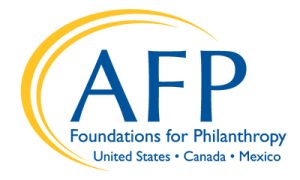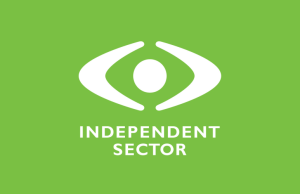The coronavirus pandemic is wreaking havoc on the U.S. economy. The Dow Jones has dropped precipitously. Unemployment is up by tens of millions of workers within just a few weeks. Most of the country is under a “stay at home” order.
Leaders at nonprofits, where they were already seeing reduction in donations, are rightfully worried about the future of the organizational mission.
You’ve likely been inundated with advice on how you should respond to best navigate this crisis. But that advice is often varied, conflicting, and lacking in real world, practical experience. So why am I adding my voice to “noise?” I’ve lived through it before and my organization came out the other side stronger, with increased revenue and more people served than we ever imagined.
I was the CEO of Wounded Warrior Project (WWP) during the last financial crisis — the Great Recession. With our organization just five years old at the time, and a growing population in need of our services, we had a lot at stake. But when others in the sector saw only financial threats, we sought out opportunities that laid the foundation for our exponential future growth — from $21 million in 2008 to $400 million by 2015.
Deciding on the right strategies to see us through the recession was a grueling process, with many long nights and passionate discussions. But thanks to having the right people in the room, WWP’s leaders weren’t afraid to speak hard truths and challenge traditional thinking. Difficult decisions were made that enabled WWP to successfully navigate the crisis. Not all of the approaches will work for every nonprofit. However, here are some of the strategies you should consider to get your nonprofit through the recession.
#1 Don’t Cut Your Fundraising Budget
If you follow only one recommendation, it should be this one. In times of fear, when you see less revenue coming in, it’s an easy first instinct to start cutting budgets. Avoid cutting your fundraising budget or you’ll start a self-fulfilling prophecy and doom-cycle. You will fundraise less, and you will raise even less revenue, further diminishing your organization’s impact.
The better strategy is to target other areas for budget cuts so you can maintain your fundraising budget and not make the recession’s effect worse than it must be in the long-run.
The conventional wisdom among nonprofit managers during the Great Recession, fueled by expert advice, was that a decline in charitable giving was inevitable. They were counseled to accept that reality, pull back on their fundraising efforts, and batten down the hatches to wait out the coming storm. Many nonprofit leaders followed that advice and accelerated, or created, a decline in their fundraising revenue.
Facing the same economic challenges at WWP, we made the opposite decision and re-positioned funds to increase our fundraising budgets during 2008 and 2009. As total charitable giving in the U.S. dropped an estimated 11 percent ($34 billion) during those two years WWP’s revenue increased 41 percent ($7.6 million).
#2 Small Donors Matter
Recessions cause a domino effect. Businesses get hit hard, portfolios shrink, foundations see increased competition for grant funds, and nonprofits receive less money – not just from foundations but from corporate sponsors, major donors, and other previously lucrative channels. This is not to say that you should ignore these channels all together. The recommendation is to shift your focus to small dollar donors.
Individual, small dollar donors — who you can target through direct mail, email, and social media campaigns — are more resilient and dependable in times of economic crisis. Individuals making $25, $50, or $100 donations might give slightly less during the recession, but they will still give to causes about which they care deeply. Keep those donors engaged and don’t be afraid to ask them to donate.
That’s what was done at WWP. During the first year of the Great Recession, the focus was heightened on small dollar donors and increased our investment in the direct response fundraising channels through which they give. At a time when other nonprofits were pulling back on their fundraising activities, WWP’s appeals not only increased to existing donors but action was also taken to capture new donors. The rationale was that even if small donors were giving slightly less, revenue would increase by grabbing more market share. That focus on small dollar donors and new donor acquisition not only got WWP through the recession, it created the foundation for future growth.
#3 Stick to Messaging About the Importance of Your Mission
Resist the urge to ask for money simply because there’s a financial crisis going on. It’s an ineffective message because — and this might be difficult to hear — your donors aren’t giving to your organization. They’re giving through your organization to a cause they care about. Your mission and impact are what resonate with your donors. It’s what brought them to you in the first place. Don’t let the recession induce you to change your message.
If there’s a heightening impact on your mission that’s connected to the financial crisis, that’s another story. By all means, highlight the most relevant part of your message. If you’re a food bank, healthcare organization, shelter, etc., this is the time to talk about the increased need. Even if your organization isn’t directly responding to the current health and economic crises, your mission might be still impacted. For example, civil rights organization are confronting increased xenophobia in the wake of the pandemic. If that’s the case, don’t hesitate to incorporate that impact, and increased need, in your fundraising appeals. But, always keep your message focused on your mission and cause, not the organization.
#4 Your People Are Your Greatest Asset
Remember that your organization runs on people. Your people are the fuel to your mission. They’re going through the same financial crisis as you and your donors. Acknowledge this issue. Let them know you’re there for them and care for their health and wellbeing — and that you as leaders are willing to sacrifice your own bottom lines to avoid down the chain cuts.
As an alternative to layoffs, look at temporary executive level pay cuts and bonus freezes or short-term freezes to non-essential employee benefits.
If your team doesn’t feel supported, they won’t be performing at their highest level. Take care of your people, so they will be able to take care of your constituents, further your mission, raise the necessary funds, and ultimately see you through to the other side.
#5 Make Tough Decisions for the Long Term
You’re probably thinking that sounds great, but how do I pay for all this during a recession? If you’re at one of the few nonprofits fortunate enough to have built up modest reserves or an endowment, you should absolutely access those rainy day funds now — when it’s pouring. If the organization is like most nonprofits operating on tight cash flows and low administrative overhead, then you’ll be faced with the difficult choice of whether, and where, to cut your program budget.
In 2008, leaders at WWP had to face this tough decision. At the height of the conflicts in Iraq and Afghanistan, with significant numbers of wounded veterans coming home, the difficult, emotional decision was made to cut the program budget and reinvest that money into direct response fundraising. The effect of that decision was that WWP would serve fewer people than planned during the current year. WWP would serve far fewer in the years to come if that tough call had not been made.
Yes, this is a challenging strategy to follow. The decision to reduce program spending in 2008 meant that in the following seven years WWP was able to exponentially scale impact. WWP grew from a few program offices to more than 20 across the country and internationally. It deepened the mental health, employment, and physical health program offerings, and expanded the reach from serving several thousand to serving more than 75,000 families.
A good place to start when considering potential program cuts is to take a good, hard, look at all of your organization’s activities and create a “stop doing list.” Every organization, big or small, has legacy programs or activities that continue to be carried forward, year-over-year, even though they might no longer be relevant or impactful.
Every manager encounters those programs, the ones created at the behest of a large donor, or that always felt like mission drift, or are simply providing diminishing results each year. Now is the time to identify, and cut, those activities and pour the dollars saved into other activities that are essential to navigating this crisis and furthering your mission.
We are living in a world of uncertainty, but a surety is that charities will be needed long after the immediate crisis ends to help those most severely impacted. Unfortunately, many good organizations will be forced to close due to a lack of funding based on the actions leaders take now. It is my hope that, by following a path like the one forged at WWP during the last recession, some can come through even stronger than before, with greater purpose, funding, programming, and impact.
Steven Nardizzi is the former CEO of Wounded Warrior Project and a current partner at Paragon Strategic Insights, a consulting firm that helps nonprofits develop strategic direction, scale their revenue and programs, and raise awareness of key issues affecting their stakeholders. His email is [email protected]












